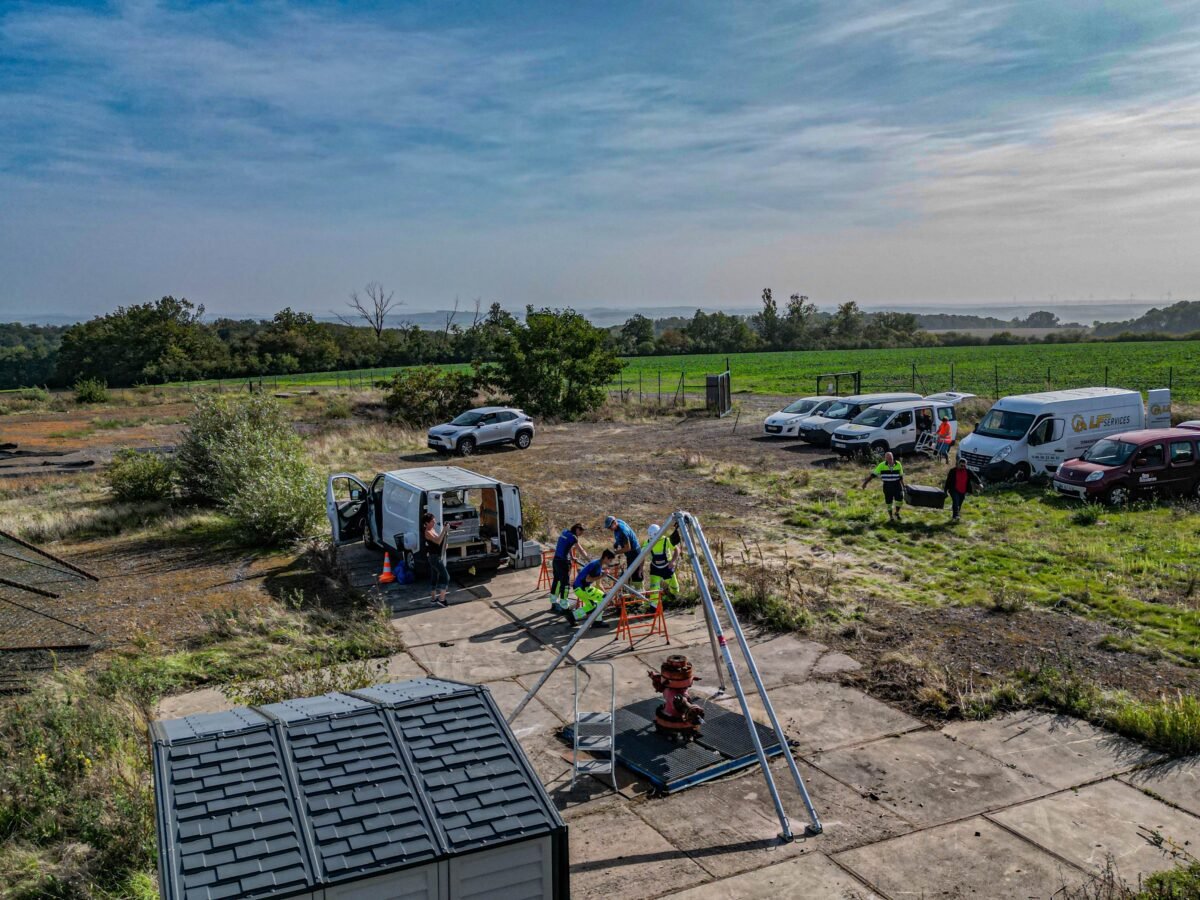Philippe de Donato and Jacques Pironon, researchers in a French laboratory, are working on the extraction of native hydrogen in France in collaboration with the gas company Française de l’Énergie. They told pv magazine that they plan to continue their exploration next year to confirm their thesis that digging deeper yields more hydrogen.
According to pv magazine International
The natural hydrogen extraction project in France, launched in 2018, is now attracting unprecedented interest from experts and politicians. A team of two researchers is studying a structure in Lorraine 150 km long, 80 km wide and 6 km deep. “We believe that methane is produced in coal seams, while hydrogen is found at great depth. We need high temperature and temperature increases with depth. We believe that the correct temperature for the reaction to start is between 150 and 200 degrees, said Jacques Pironon, director of the GeoRessources laboratory. magazine pv. We expect to find this temperature range between 5,000 and 6,000 meters.
250 million tons of hydrogen
According to their first results, coal seam samples contain 1% hydrogen at 600 meters, with this percentage reaching 17% at 1,250 meters. The researchers expect this proportion to double again at a depth of 3,000 meters, as “the proportion of white hydrogen in the subsurface is expected to increase linearly”.
The laboratory belongs to Lorraine University and the National Center for Scientific Research (CNRS). The project is financed by the French government, the Grand-Est region and the European Union. Rumors suggest that funding could increase. French President Emmanuel Macron recently declared that “white hydrogen,” or natural hydrogen, is a priority for the country.
Image: Jacques Pironon
For now, the two researchers are trying to test their hypothesis, which suggests that hydrogen is produced at high temperatures in the presence of iron. “When water is in contact with iron, in our case iron carbonate, hydrogen can be formed. The water molecule is broken by the reduction effect, the transfer of electrons, explains Jacques Pironon. In this case, the water molecule is broken. Iron from its original form Fe2+ is converted to Fe3+ to balance the reaction.’
The team, whose original task was to estimate the methane content of the Lorraine basin, expects a large amount of hydrogen: 250 million tons of hydrogen. But the project could find even more. “This estimate may change in a few months as we have more data. We expect a higher hydrogen content,” said the researcher.
The project was originally supposed to end at the end of the year, but will continue into 2024, given the interest shown by the government and the region. “We are talking to many partners. The region would like to be the leader of the project, continues Jacques Pironon. At the moment I can’t say exactly when the new phase will start because we are still discussing. We are discussing starting in April or May 2024.” According to the researchers, several mayors of towns around the deposit are interested in the new industries, as unemployment rates are high in the region.
Negotiations with the United States, Australia and South Africa
“This discovery is good news for local authorities. However, certain ecological associations oppose the exploitation of subsoil,” explains the scientist. It’s hard for them to say they’re against hydrogen, but they didn’t agree to drilling.” The team will continue to work with ex-mine gas specialist Française de l’Énergie, based in the region and operating in France and Belgium . However, the team could include new, larger companies. The only unresolved question is the commercial value of this hydrogen.
“We are in the exploration phase and we are thinking about new ways of exploration,” said Jacques Pironon. Costs are therefore still difficult to define. In the case of conventional gas exploration, O&G likes to find a reservoir with a pressure of 200 bar, whereas in our case the pressure should be lower, around 20 bar. We are in very different circumstances.”
The team wants to develop new concepts and techniques to reduce costs and environmental impact. “We want to develop a system for separating gases from water directly in the well. This system should also separate different gases: methane, hydrogen and nitrogen, reports Jacques Pironon. If we need to produce hydrogen but not methane, it is necessary. We are therefore working on the development of special membranes for use directly in the borehole.” In cooperation with Solexperts, the laboratory developed the SysMoG probe, capable of separating gases from water in the borehole and enabling the transfer of gases to the surface.
The laboratory is in talks with companies and public authorities in Belgium, the Netherlands, Luxembourg and Germany, which are countries with similar geological formations. At the research level, the team is in contact with engineers in the United States, Australia, South Africa, India and China.
This content is copyrighted and you may not reuse it without permission. If you would like to collaborate with us and reuse our content, please contact our editorial team at the following address: editors@pv-magazine.com.

